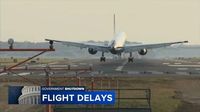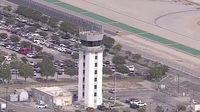On Monday, October 6, 2025, Hollywood Burbank Airport found itself at the epicenter of a growing national crisis as the ongoing government shutdown forced the control tower to close for nearly six hours, leaving pilots and passengers alike grappling with delays, uncertainty, and a sense of déjà vu from previous shutdowns. From 4:15 p.m. to 10 p.m., the usually bustling control tower sat empty, a direct result of air traffic controllers—deemed essential federal employees—working without pay and increasingly calling in sick. Instead, operations were run remotely by Southern California TRACON, an approach and departure team based in San Diego, according to KABC and CNN.
For many travelers, the experience was unsettling. "You'd like to have somebody local that can see what's going on, visually, right?" asked Kimberly Riddle, a passenger from Tracy, California, as reported by KABC. Influencer Salice Rose echoed the anxiety: "It's a little scary, right? I'm about to run it myself." The curfew at Burbank Airport, usually strictly observed at 10 p.m., was broken as planes continued to take off as late as 11 p.m., a rare sight attributed to cascading delays and cancellations.
The impact was not limited to Burbank. The Federal Aviation Administration (FAA) reported staffing shortages at twelve facilities nationwide, including control towers in Phoenix, Denver, Newark, Jacksonville, Chicago, Washington, DC, and Indianapolis. Flight delays at major hubs like Denver International and Newark Liberty International compounded the chaos. According to CNN, at one point, Burbank faced delays exceeding two and a half hours, with similar disruptions reported at other airports.
In the absence of controllers in the Burbank tower, pilots were forced to revert to procedures more commonly used at small, rural airports without control towers. The tower frequency became a "common traffic advisory frequency," requiring pilots to coordinate among themselves and announce their intentions to any other planes listening. "Burbank traffic, this is Southwest 737 (flight) 2998 departing runway 15 at Burbank," a Southwest Airlines pilot broadcast, according to audio recorded by LiveATC.net and cited by CNN. Two helicopters nearby responded, confirming they were not in the way—a makeshift solution, but one that underscored just how fragile the system had become.
Despite these extraordinary measures, safety remained the top priority for the FAA. U.S. Secretary of Transportation Sean Duffy acknowledged the uptick in sick calls and the stress controllers are under, saying, "So now what they think about as they're controlling our airspace, is, 'How am I going to pay my mortgage? How do I make my car payment?' Do I think they're more stressed right now in our towers? Yes. Is our airspace unsafe? No." Duffy emphasized that when sick calls rise, "we will reduce the flow consistent with a rate that's safe for the American people." As a result, delays and cancellations are inevitable.
The National Air Traffic Controllers Association (NATCA), which represents nearly 11,000 fully certified controllers, highlighted just how dire the situation has become. In a statement provided to KGO and CNN, the union said, "Nearly 11,000 fully certified controllers remain on the job, many working 10-hour shifts as many as six days a week, showing extraordinary dedication to safely guiding millions of passengers to their destinations—all without getting paid during this shutdown." The union also pointed out that the crisis is being magnified by a long-standing staffing shortage in the industry, with approximately 3,000 unfilled air traffic controller positions even before the shutdown began.
Mike McCarron, an aviation consultant, explained to KGO why the problem is so persistent: "It takes about five months to complete the academy training. And then it takes anywhere from two to four years to become completely qualified as a controller. So there's a huge lag time." This means that even once the shutdown ends, the effects on staffing and airport operations could linger for months or even years.
As the shutdown entered its sixth day on October 6, the ripple effects were already being felt across the aviation industry. Passengers at Burbank and other airports reported two- to three-hour delays, with many expressing frustration and fatigue. "See, if mine gets deleted one more time, I might just head back home. I can't. I'm not going to sit here and wait. I'm not. I'm not doing it," Salice Rose told KABC after enduring repeated delays.
The longer the shutdown continues, the more pronounced the disruptions are expected to become. Jeffrey Price, a professor of aviation at the Metropolitan State University of Denver, told KGO, "The system does become a little bit more brittle, and the longer this goes, the more the traveler is going to notice it." This was the case during the record-breaking 35-day shutdown in 2018-2019, when unpaid security screeners and air traffic controllers called in sick in increasing numbers, leading to terminal closures and lawsuits over unpaid wages. Miami International Airport, for example, had to temporarily close one of its terminals as TSA officers called in sick at twice the usual rate.
Air traffic controllers, along with more than 61,000 TSA employees, are legally required to work during a government shutdown but must do so without pay. According to KGO, controllers will receive a partial paycheck for work done before the shutdown began, but there is no guarantee of when full compensation will resume. The stress of working without pay—while being responsible for the safety of millions—has led some controllers to seek second jobs or call in sick simply to make ends meet. As Secretary Duffy put it, "If someone has to take sick leave to drive Uber to make the difference, those are decisions they're going to make themselves. I don't want them finding a second job to pay them, a job to pay the bills. I want them to get paid for the work they're doing today, keeping our planes in the air."
The political blame game has only intensified as the shutdown drags on. California Governor Gavin Newsom pointed the finger directly at President Donald Trump, tweeting, "Thanks, @realDonaldTrump! Burbank Airport has ZERO air traffic controllers from 4:15pm to 10pm today because of YOUR government shutdown." The White House, meanwhile, has accused Democrats of intentionally shutting down the government to demand free health care for undocumented immigrants, a claim Democratic leaders have denied. House Minority Leader Rep. Hakeem Jeffries told KABC, "The White House has gone radio silent since the Oval Office meeting last Monday, and neither Leader Schumer or myself have heard a word from the administration."
Beyond the immediate disruptions, the shutdown threatens to curtail vital services to rural America. The Essential Air Service program, which subsidizes flights to smaller cities, is set to expire on October 12, 2025, as reported by CNN. The Department of Transportation has warned that the expiration could leave many small and remote communities without air service—a lifeline for regions like Alaska, where air travel is often the only viable means of transportation. Airlines such as Skywest and Alaska Airlines have pledged to continue flights for now, but their ability to do so hinges on a resolution to the shutdown. "Support from the Essential Air Service program is necessary to maintain this vital community service," Alaska Airlines said in a statement.
An independent panel of aviation safety experts commissioned by the FAA underscored the far-reaching consequences of government shutdowns. Their 2023 report, cited by CNN, concluded, "This stop-and-start process in Congress has resulted in the disruption of critical activities, notably including the hiring and training of air traffic controllers. It has also slowed down the implementation of key technology modernization programs, delayed thousands of flights, and held up billions of dollars of airport infrastructure investments." The report warns that a 24/7, 365-day safety-critical operation that supports over 5 percent of the national GDP should never be subject to lapses in funding.
As the shutdown grinds on, the ripple effects continue to spread—from missed connections and stranded travelers to the very backbone of America’s aviation system. The sense of urgency is palpable among travelers, workers, and officials alike, all hoping for a swift resolution before the system’s cracks widen into something far worse.


